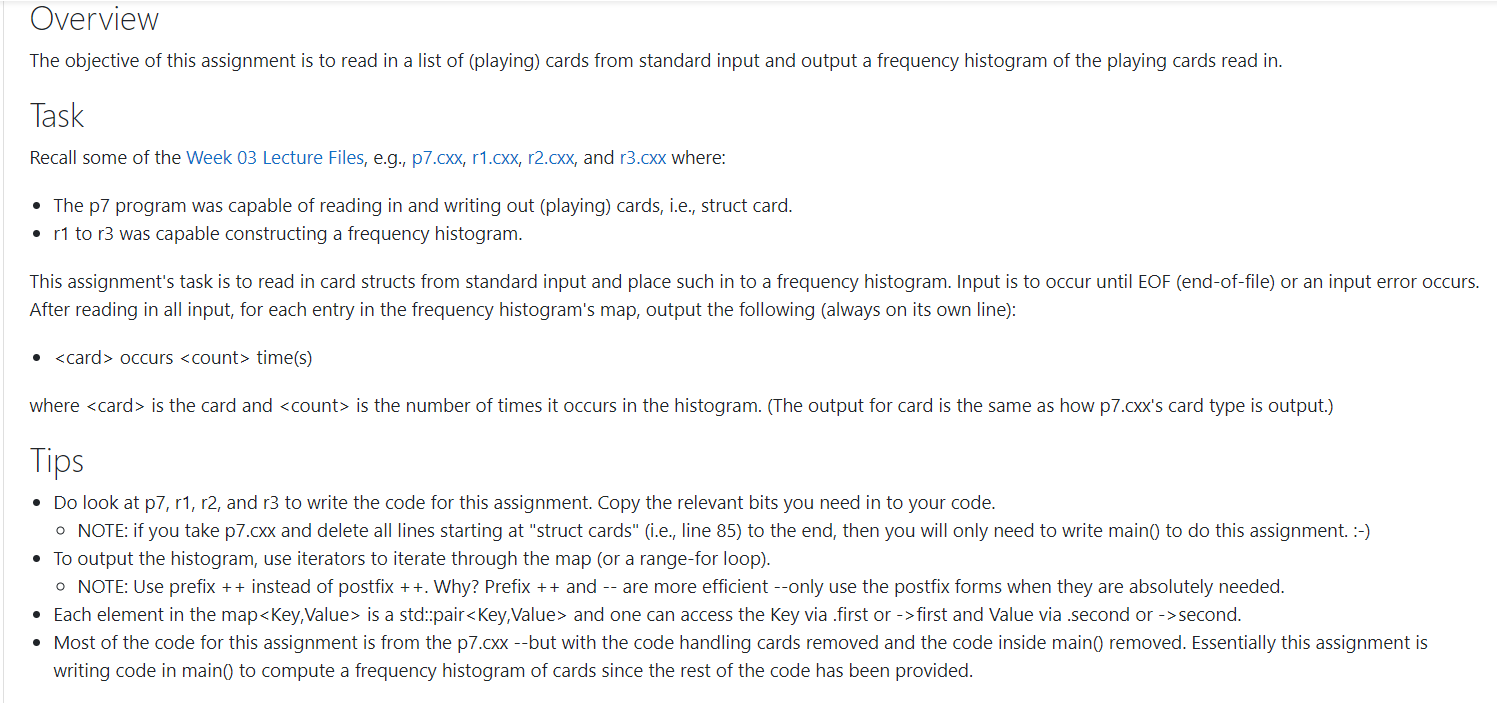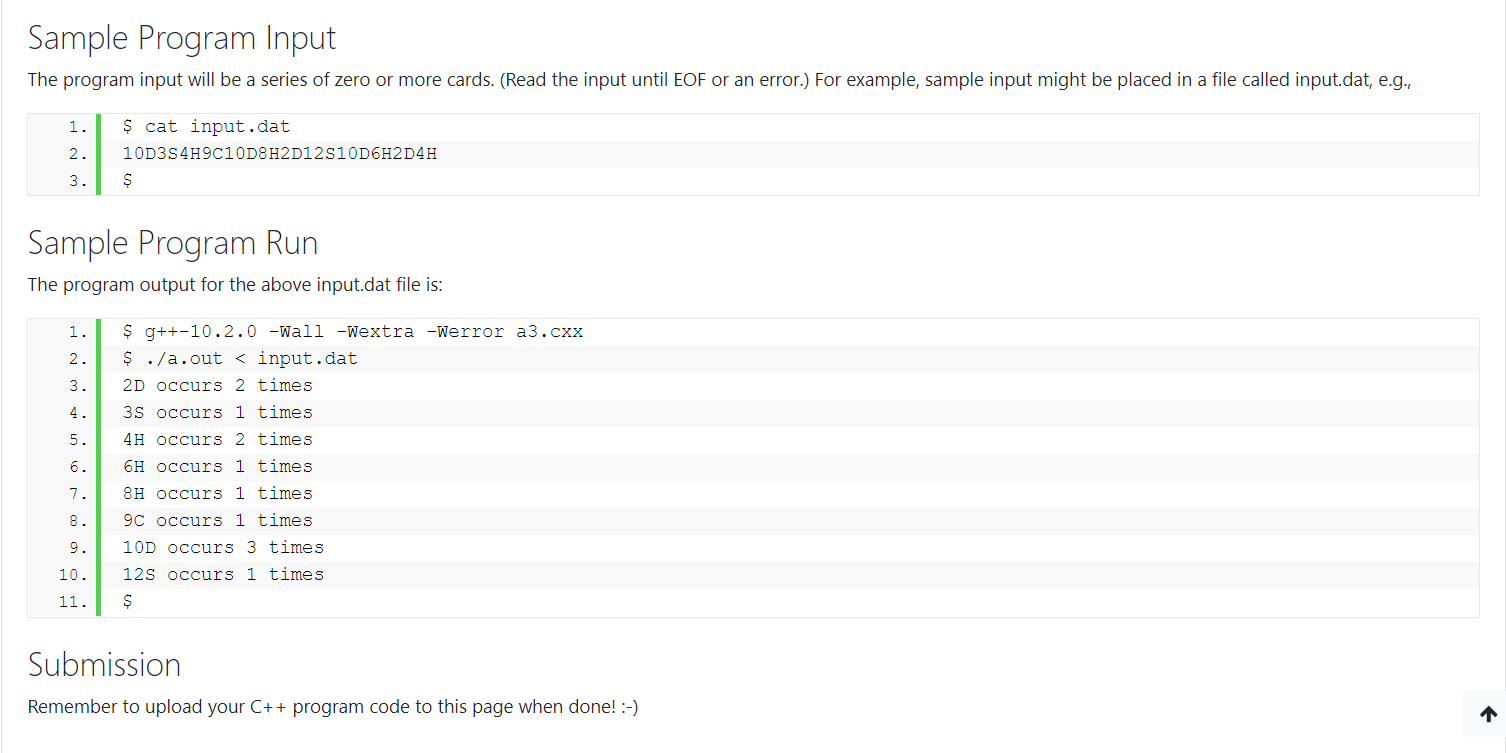Question
Given p7.cxx ****************************** #include #include #include #include using namespace std; //------ struct card { enum class suit { club, spade, diamond, heart }; enum {


Given p7.cxx ******************************
#include
//------
struct card { enum class suit { club, spade, diamond, heart }; enum { ace=1, jack=10, queen=11, king=12 }; using number = int;
number num_; suit suit_; };
bool operator ==(card const& a, card const& b) { return a.num_ == b.num_ && a.suit_ == b.suit_; }
bool operator
istream& operator >>(istream& is, card& c) { // number followed by the suit (CSHD)... is >> c.num_;
char ch; if (is >> ch) { switch (ch) { case 'C': c.suit_ = card::suit::club; break; case 'S': c.suit_ = card::suit::spade; break; case 'H': c.suit_ = card::suit::heart; break; case 'D': c.suit_ = card::suit::diamond; break; default: is.setstate(ios::failbit); break; } } else is.setstate(ios::badbit); return is; }
ostream& operator
switch (c.suit_) { // card::suit allows us to access suit // suit::club allows us to access club // thus, card::suit::club lets us access club case card::suit::club: os
case card::suit::spade: os
case card::suit::diamond: os
case card::suit::heart: os
return os; }
//------
struct cards { vector
void sort_by_lt() { // [ first, last ) -- half-open interval sort( cs_.begin(), cs_.end() // OR: begin(cs_), end(cs_) ); } };
ostream& operator
istream& operator >>(istream& is, cards& mycards) { size_t sz; if (is >> sz) { mycards.cs_ = vector
for (size_t i=0; i != sz; ++i) { card c; if (is >> c) mycards.cs_.push_back(c); else { is.setstate(ios::badbit); break; } } } return is; }
int main() { cards mycards; if (cin >> mycards) { mycards.sort_by_lt(); cout
card d{ 15, card::suit::heart };
auto pos = find( begin(mycards.cs_), // start here end(mycards.cs_), // go up to by not including this position d ); auto pos2 = find( pos, end(mycards.cs_), card{ 10, card::suit::club } );
#if 1 copy(pos, pos2, ostream_iterator ************************** Given r1.cxx*******************************\ #include using namespace std; int main() { // map of (number, num of times number occurs)... map int i; while (cin >> i) ++freqhist[i]; cout ************************* Given r2.cxx************************ #include using namespace std; int main() { // map of (number, num of times number occurs)... map string i; while (cin >> i) ++freqhist[i]; cout ******************************************** Given r3.cxx******************************* #include using namespace std; int main() { // map of (number, num of times number occurs)... map string i; while (cin >> i) { auto[pos,is_added] = freqhist.insert({i,1}); if (!is_added) ++pos->second; } cout ***************************************
Step by Step Solution
There are 3 Steps involved in it
Step: 1

Get Instant Access to Expert-Tailored Solutions
See step-by-step solutions with expert insights and AI powered tools for academic success
Step: 2

Step: 3

Ace Your Homework with AI
Get the answers you need in no time with our AI-driven, step-by-step assistance
Get Started


